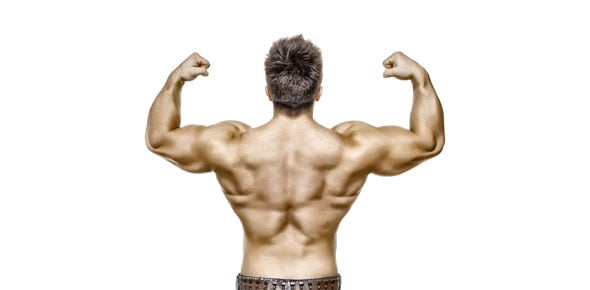Muscle Terminology Quiz

This quiz tests your knowledge about muscle attachment and muscle action terminology.
Please review the Term Glossary below before starting the quiz.
Origin – Least moveable muscle attachment
Insertion – Most moveable muscle attachment
Midline – Runs down the nose and navel, dividing the body into equal left and right halves.
Flexion – Decrease in joint angle
Extension – Increase in joint angle
Abduction – Move away from the body’s midline
Adduction – Move toward the body’s midline
Supination – Turning the palm or sole upward
Pronation – Turning the palm or sole downward
Protraction – Moves forward
Retraction – Moves backward
- 1.
What determines a muscle's insertion?
- A.
The more moveable attachment.
- B.
The shape of the muscle.
- C.
The less moveable attachment.
- D.
The action of a muscle.
Correct Answer
A. The more moveable attachment.Explanation
A muscle moves from insertion toward the origin, which requires the insertion to be more moveable.Rate this question:
-
- 2.
How does a muscle supinate the hand?
- A.
Bends the hand away from the chest.
- B.
Turns the palm downward.
- C.
Bends the hand toward the chest.
- D.
Turns the palm upward.
Correct Answer
D. Turns the palm upward.Explanation
Turning the back of the hand down and the palm up is referred to as supination.Rate this question:
-
- 3.
How does a muscle pronate the foot?
- A.
Turns the sole downward.
- B.
Points the foot toward the shin.
- C.
Turns the sole upward.
- D.
Points the foot away from the shin.
Correct Answer
A. Turns the sole downward.Explanation
Turning the sole of the foot downward or outward is referred to as pronation.Rate this question:
-
- 4.
What happens when a muscle flexes the elbow?
- A.
Increases the angle between the forearm and upper arm.
- B.
Rotates the elbow outward.
- C.
Decreases the angle between the forearm and upper arm.
- D.
Rotates the elbow inward.
Correct Answer
C. Decreases the angle between the forearm and upper arm.Explanation
Flexion occurs when the angle is decreased beween bones at a joint, such as those of the forearm and arm at the elbow.Rate this question:
-
- 5.
How does a muscle extend the knee?
- A.
Rotates the knee inward.
- B.
Rotates the knee outward.
- C.
Decreases the angle between the shin and upper leg.
- D.
Increases the angle between the shin and upper leg.
Correct Answer
D. Increases the angle between the shin and upper leg.Explanation
Extension occurs when the angle between bones is increased at a joint, such as the shin moving away from the upper leg at the knee.Rate this question:
-
- 6.
What happens when a muscle abducts the arm?
- A.
Rotates the arm inward.
- B.
Rotates the arm outward.
- C.
Moves the arm away from the body.
- D.
Moves the arm toward the body.
Correct Answer
C. Moves the arm away from the body.Explanation
Abduction occurs when something moves away from the body's midline, which runs down the front of the body passing through the nose and navel. So an arm will move away from the midline or body when it is abducted.Rate this question:
-
- 7.
Jutting your jaw outward is an example of
- A.
Protraction.
- B.
Retraction.
- C.
Flexion.
- D.
Extension.
Correct Answer
A. Protraction.Explanation
Protraction occurs when something is moved forward, such as jutting your jaw outward.Rate this question:
-
- 8.
How do you retract your shoulders?
- A.
Pull them backward.
- B.
Pull them forward.
- C.
Pull them upward.
- D.
Pull them downward.
Correct Answer
A. Pull them backward.Explanation
Retraction occurs when something is moved backward, such as pulling back your shoulders.Rate this question:
-
- 9.
This happens when an arm is adducted.
- A.
The arm moves away from the body.
- B.
The arm rotates inward.
- C.
The arm rotates outward.
- D.
The arm moves toward the body.
Correct Answer
D. The arm moves toward the body.Explanation
Adduction occurs when something moves toward the body's midline, which runs down the front of the body passing through the nose and navel. So an arm will move toward the midline or body when it is adducted.Rate this question:
-
- 10.
The origin moves toward the insertion during a muscle contraction.
- A.
True
- B.
False
Correct Answer
B. FalseExplanation
The insertion ALWAYS moves toward the origin. Even in cases where other muscles hold down the insertion, the muscle fibers still move toward the origin, making the origin the more moveable attachment. I.e., hip muscles contracting and making you lean sideways even though the muscles are pulling up on the hip. This is due to muscles making the leg and hip muscle insertions stationary and causing the body and the hip muscle origins to move toward the leg.Rate this question:
-
Quiz Review Timeline +
Our quizzes are rigorously reviewed, monitored and continuously updated by our expert board to maintain accuracy, relevance, and timeliness.
-
Current Version
-
Mar 04, 2013Quiz Edited by
ProProfs Editorial Team -
Nov 07, 2012Quiz Created by
Dwinton5
- Aura Quizzes
- Axial Skeleton Quizzes
- Body Mechanics Quizzes
- Body Parts Quizzes
- Body System Quizzes
- Chest Quizzes
- Ear Quizzes
- Endocrine Quizzes
- Eye Quizzes
- Feet Quizzes
- Gland Quizzes
- Limb Quizzes
- Musculoskeletal Quizzes
- Pain Quizzes
- Pharmacodynamics Quizzes
- Piercing Quizzes
- Spanish Body Parts Quizzes
- Thorax Quizzes
- Urine Quizzes
 Back to top
Back to top


